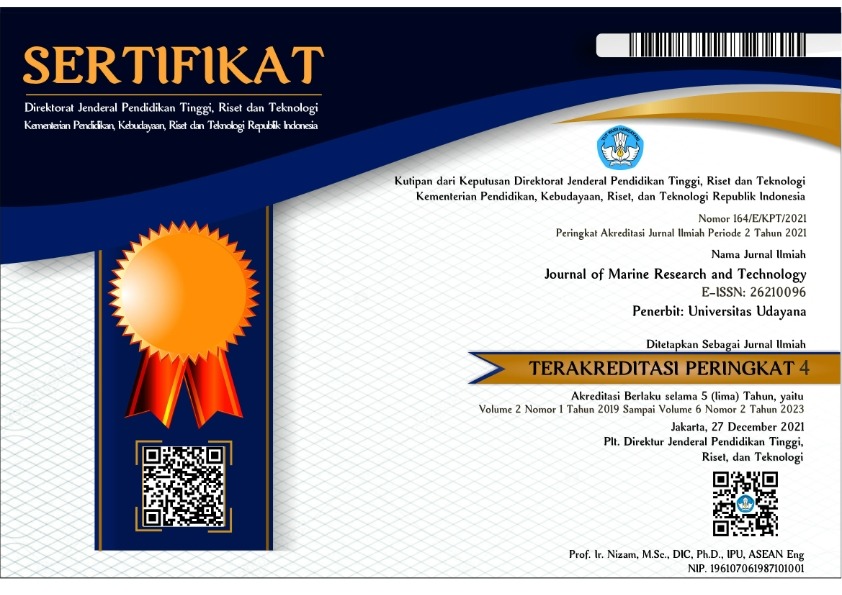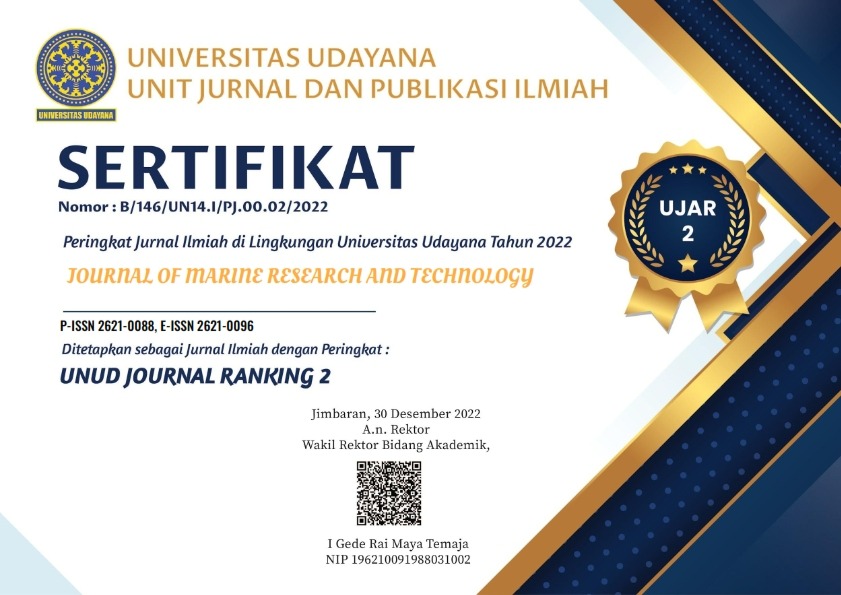Simpanan Karbon Padang Lamun di Kawasan Pantai Nusa Lembongan, Klungkung, Bali
Seagrass; Biomass; Carbon Storage; Nusa Lembongan; Coastal Area
Abstract
The seagrass ecosystem has great potential in absorbing of CO2 concentration in atmosphere, results of the process photosynthesis will be stored in form of biomass during seagrass still alive. The research purpose was to know carbon storage from the seagrass ecosystem at the top substrate (leaves) and bottom substrates (rhizome and roots) in Nusa Lembongan coastal area, Bali. The research location is divided into three stations with 27 points. Carbon stock was analyzed by using invasion method consisting of calculating the value of ash content, organic matter content and carbon content. The results found three seagrass species in the Nusa Lembongan coastal area: Thalassia hemprichii, Cymodocea rotundata and Enhalus acoroides. The most dominant spesies is the Thalassia hemprichii. The carbon stored at the top substrate (leaf) is 21.08 gC/m2 and the bottom substrates (rhizome and root) are 52.67 gC/m2. The total estimated carbon deposits in the Nusa Lembongan coastal area is 65.98 tonnes with carbon deposits in the bottom substrate are larger than the top substrate, which is 71% or 47.12 tons on the bottom substrate while 29% or 18.86 tons on the top substrate.
Downloads
Copyright Notice
The copyright to this article is transferred to Journal of Marine Research and Technology (JMRT). The copyright transfer covers the exclusive right and license to reproduce, publish, distribute and archive the article in all forms and media of expression now known or developed in the future, including reprints, translations, photographic reproductions, microform, electronic form (offline, online) or any other reproductions of similar nature.






